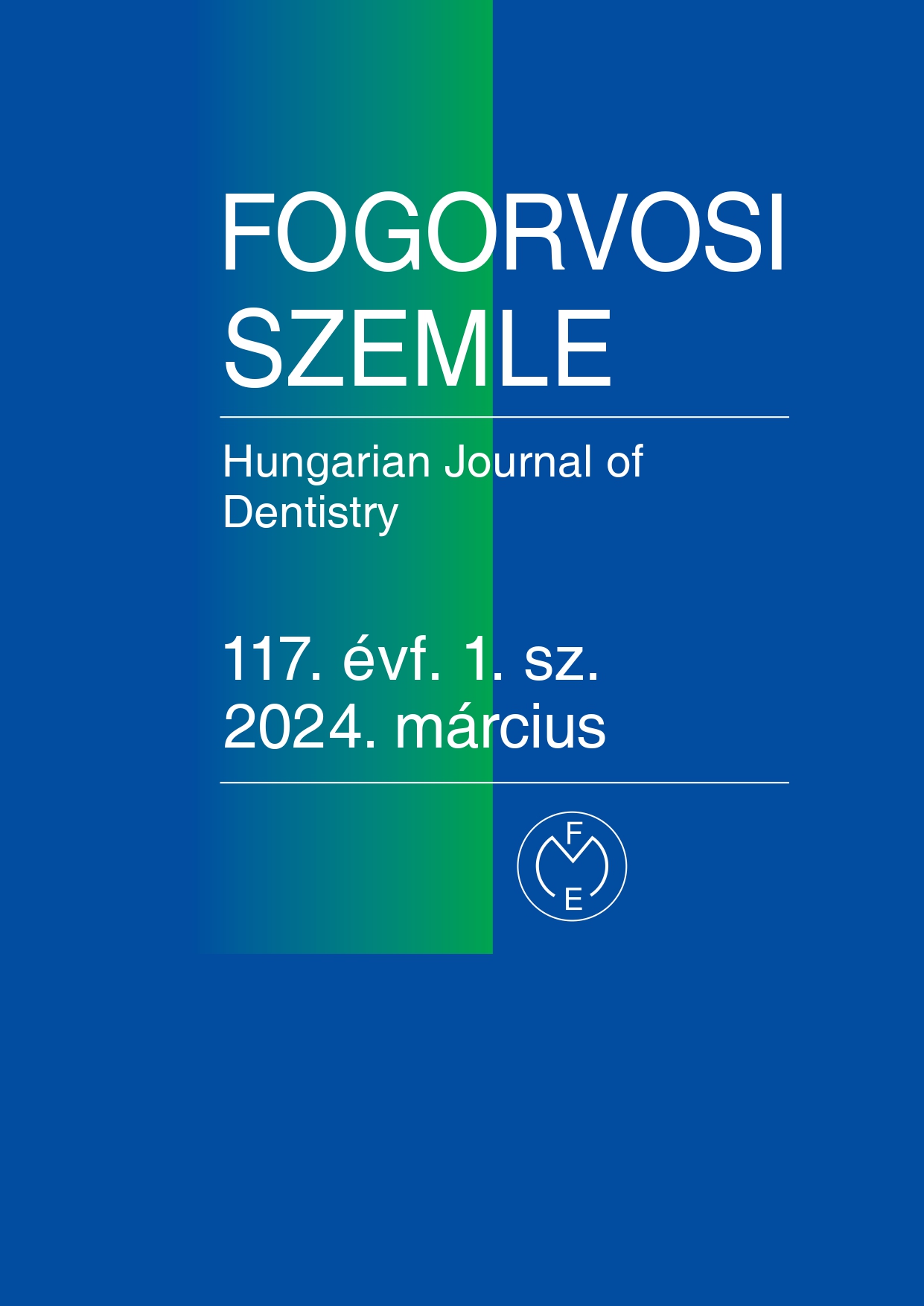Restoration of posterior teeth with indirect and direct solutions, using ORMOCER and nanohybrid composite technology
Abstract
Composites are complex materials that have undergone significant development in recent decades. In addition to changing the particle size of the fillers, the manufacturers also targeted to further improve the resin matrix. The Organically Modified Ceramics or ORMOCERs can be considered such a promising development. Their uniqueness lies in the fact that the frame of the resin matrix is the inorganic -Si-O-Si chemical bond to which high molecular weight unsaturated organic side groups are connected. In contrast to the classical composites, the ormocers are in polymer state even before light curing, so an inorganic-organic copolymer is the backbone of the resin matrix. Admira Fusion (VOCO, Germany) is a highly filled (84% w/w) composite based on ORMOCER technology, in which, in addition to the above-mentioned chemical innovation, the nanohybrid filler is also completely silanized, so the -Si-O-Si bond will form the entire backbone of the filler, making it a purely ceramic based composite. Thanks to its unique chemical structure, that does not contain classical bis-GMA monomers, it has excellent biocompatibility, low shrinkage (1.25%) and a wide range of uses. In the case presentation a direct and indirect restoration solution of a premolar and molar is presented. The final cuspal coverage of the endodontically treated tooth #45 was preceded by the filling replacement on the adjacent tooth #46. An anatomical and aesthetic restoration was created with the Admira Fusion composite family and the Final Touch characterization system. Centripetal technique was used to build up the tooth and the occlusal surface was rebuilt with layering technique. After completion of the direct filling indirect restoration of #45 was executed using CAD-CAM technology from nanohybrid restoration material Grandio blocs (VOCO, Germany). The advantages of composite blocs beside the fact that they are antagonist friendly is that they can be easily individualised and repaired if needed and do not require firing, making the whole process faster. In conclusion, ORMOCER technology is a reliable, biocompatible, low-shrinkage alternative to traditional composites. The nanohybrid Grandio blocs are suitable materials for creating fracture-resistant, aesthetic indirect restorations.
References
Al-Hiyasat, A.S., H. Darmani: In vivo effects of BISGMA-a component of dental composite-on male mouse reproduction and fertility. Journal of Biomedical Materials Research Part A 2006; 78A(1): p. 66-72, https://doi.org/10.1002/jbm.a.30667
Aminoroaya, A., R.E. Neisiany, S.N. Khorasani, P. Panahi, O. Das, H. Madry, et al.: A review of dental composites: Challenges, chemistry aspects, filler influences, and future insights. Composites Part B: Engineering 2021; 216: p. 108852, https://doi.org/10.1016/j.compositesb.2021.108852
Aquilino, S.A., D.J. Caplan: Relationship between crown placement and the survival of endodontically treated teeth. J Prosthet Dent. 2002; 87(3): p. 256-63, https://doi.org/10.1067/mpr.2002.122014
Arunachalam, S., A. Valiathan: Dental Ceramics and Ormocer Technology - Navigating the Future. Trends in Biomaterials and Artificial Organs 2006; 20,
Darmani, H., A.S. Al-Hiyasat: The effects of BIS-GMA and TEG-DMA on female mouse fertility. Dent Mater. 2006; 22(4): p. 353-8, https://doi.org/10.1016/j.dental.2005.04.029
Ferracane, J.L.: Resin composite--state of the art. Dent Mater. 2011; 27(1): p. 29-38, https://doi.org/10.1016/j.dental.2010.10.020
Lins, R., A. Vinagre, N. Alberto, M.F. Domingues, A. Messias, L.R. Martins, et al.: Polymerization Shrinkage Evaluation of Restorative Resin-Based Composites Using Fiber Bragg Grating Sensors. Polymers 2019; 11(5): p. 859, https://doi.org/10.3390/polym11050859
Magne, P., R.C. Spreafico: Deep margin elevation: A paradigm shift. Amer J Esthet Dent. 2012; 2: p. 86-96,
Milicich, G.:The compression dome concept: the restorative implications. Gen Dent. 2017; 65(5): p. 55-60,
O'Connor, C., D. Gavriil: Predictable bonding of adhesive indirect restorations: factors for success. British Dental Journal 2021; 231(5): p. 287-293, https://doi.org/10.1038/s41415-021-3336-x
Tauböck, T.T., F. Jäger, T. Attin: Polymerization shrinkage and shrinkage force kinetics of high- and low-viscosity dimethacrylate- and ormocer-based bulk-fill resin composites. Odontology 2019, 107(1): p. 103-110, https://doi.org/10.1007/s10266-018-0369-y
VOCO: Admira fusion scientific compendium. https://www.voco.dental/us/portaldata/1/resources/products/scientific-reports/us/Admira_Fusion_Scientific_Compendium.pdf, 6-7, (2023.11.06)
VOCO: Instructions for use-Futurabond U. https://www.voco.dental/en/portaldata/1/resources/products/instructions-for-use/e1/futurabond-u_ifu_e1.pdf, (2023.11.06)
VOCO: Instructions for use-Voco Grandio blocs. https://www.voco.dental/en/portaldata/1/resources/products/instructions-for-use/e1/grandio-blocs_ifu_e1.pdf, (2023.11.06)
Wolter, H., W. Storch, H. Ott: New Inorganic/Organic Copolymers (Ormocer®s) for Dental Applications. MRS Online Proceedings Library 1994, 346(1): p. 143-149, https://doi.org/10.1557/PROC-346-143
Copyright (c) 2024 Authors

This work is licensed under a Creative Commons Attribution 4.0 International License.


.png)




1.png)



